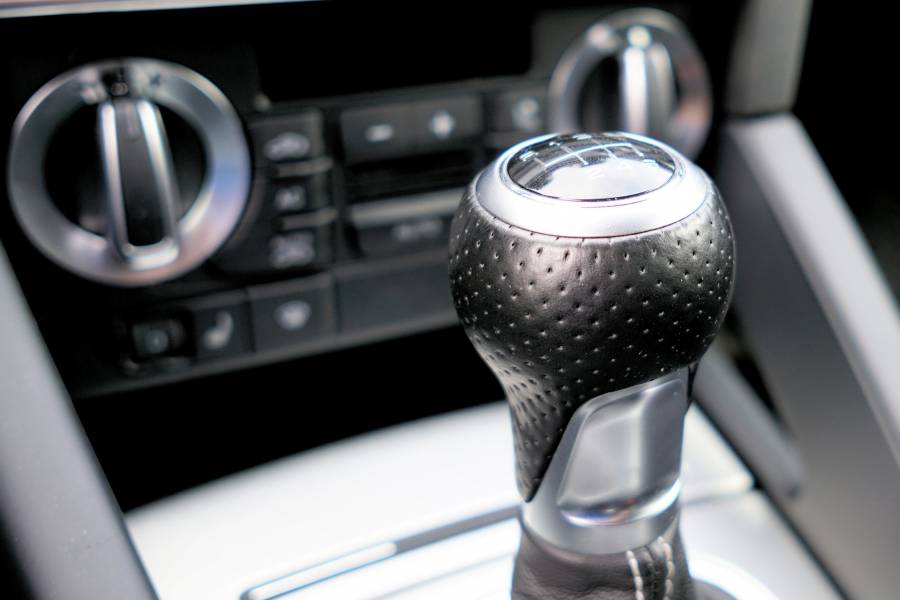Quick Navigation
Transmission problems can occur due to a lack of periodic maintenance of the transmission system or reckless car usage. When your car experiences such issues, it may be difficult to accelerate.

For instance, you might realize that the gears won’t shift from gear two to gear three. Therefore, it is essential to know why the transmission won’t shift when accelerating.
Below are the various causes of this problem and how you can address them.
1. Transmission Fluid Problem
If you have an automatic car, the transmission fluid should be clean and of the right amount at all times. But this fluid can accumulate debris and dust over time.
It can also run low due to overheating or leakages. If the transmission fluid gets dirty, it becomes thicker, thus finding it difficult to flow correctly.
On the other hand, if this fluid goes below the optimum level, it results in low hydraulic power. Low hydraulic power will make the gears slip.
As a result, the transmission won’t shift when accelerating. Fortunately, replacing the dirty fluid or topping it up, assuming it is clean, will resolve the problem.
However, it would be best to repair any transmission holes to prevent further leakages.
2. Worn Clutch
The clutch can also cause manual transmission issues. It happens when one of its components is worn.
For instance, if its disk shatters, the transmission will slip. Also, if its cable gets loose, the transmission won’t shift when accelerating.
Therefore, it is best to check the clutch components whenever you experience a transmission problem.
It would help if you also made an effort to repair or replace it to eradicate the problem.
3. Faulty Speed Sensors
Your car uses the powertrain control module (PCM) to regulate its gearbox system. It does so by applying the signals from various sensors, such as the speed sensor.
When the speed sensor fails, your car will get stuck in one gear. In such an event, the transmission won’t shift when accelerating.
Therefore, you should use a speedometer to check the condition of the speed sensors. If they are faulty, you can then replace them to sort out the transmission error.
4. An Issue With Engine Control Unit
The automatic transmission relies heavily on the Engine Control Unit (ECU).
The ECU will shift the transmission from one gear to the next based on the information it collects from the car.
For instance, it detects the engine’s speed and the throttle position and shifts the transmission appropriately.
So, if the ECU malfunctions, your car’s transmission won’t shift when accelerating. If the issue is due to a minor glitch in the ECU, you can fix it by simply resetting the ECU.
You can use your car’s model to guide you on doing so. However, if the ECU has encountered severe damage due to electric problems, you might need to replace it.
5. Faulty Synchros
The purpose of the synchros in your standard vehicle is to allow you to align the gears quickly.
But like any other component, the synchros can also wear out, mainly when operated poorly. When they do, you will experience a lot of resistance when changing the gears.
Luckily, it is pretty easy to diagnose bad synchros. To do so, feel if there is grinding when shifting from one gear to the next.
Once you confirm that they are faulty, it is prudent that you replace them to avoid getting into a more difficult situation than a transmission that won’t shift when accelerating.

6. Faulty Solenoids
The automatic transmission relies on the solenoids to change the gears. These solenoids usually open or close to regulate the flow of transmission fluid.
It does so using a voltage supplied by the transmission’s electrical system. If one or all the solenoids in the transmission go bad, the transmission won’t shift when accelerating.
When the solenoid gets faulty, you will generally experience a shaking feeling when changing the gears. Therefore, replacing the defective solenoid will solve the problem.
But it is also essential to make sure that the wiring is in perfect condition to avoid getting into the same trouble again.
7. The Clutch Master Cylinder Is Leaking
As you already know, the transmission system needs hydraulic fluid to function.
This fluid is stored by the clutch master cylinder and is responsible for providing the hydraulic pressure.
The hydraulic pressure, in turn, will press on the clutch, thus accelerating the car.
Therefore, if the clutch master cylinder leaks, there won’t be enough pressure to shift the transmission.
Luckily, it is easy to identify a leaking clutch master cylinder since it is accompanied by a clutch pedal that seems sloppy.
For this reason, you will have to repair the leaking clutch master cylinder to make the transmission work optimally again.
8. Gear Shift Lock
The automatic transmission has a gear shift lock that prevents accidental shifting of gears. Therefore, the transmission won’t shift when accelerating if the gear shift is on.
For instance, if you are in gear three and hit the brake pedal, the shift lock will be engaged, and you won’t move to gear four.
To make the transmission operational again, release the gear shift by pressing on it.
This component is usually found next to the clutch, but you can use your manual to guide you if you can’t see it.
9. Loose Transmission Fuse
The purpose of the transmission fuse is to protect the transmission’s electrical components from extreme voltage.
It does so by blowing up when a specific voltage is exceeded. Your automatic transmission has at least three transmission fuses, which can get loose and interrupt the voltage flow.
If one fuse gets loose during acceleration, your car’s transmission won’t shift.
To resolve the problem, use a multimeter to check the state of the fuses. Once you identify the loose one, use a screwdriver to tighten it.
10. A Problem With The Throttle Cables
If you haven’t solved the problem yet, it might be time to check on the throttle cables.
These cables link the gas pedal with the engine throttle plate and regulate the gas’s speed when you apply pressure on them.
Therefore, the transmission won’t shift when accelerating if they become loose. Throttle cables can also get disconnected on their ends, which will cause total failure of the transmission system.
The good news is that the transmission will immediately go back to normal by tightening the throttle cables.
However, it would be best to be careful not to apply extreme pressure that can make them snap.
Conclusion
Encountering a transmission problem can be annoying, especially when driving on the highway. Therefore, it is vital to know what causes it.
This issue can be caused by transmission issues such as worn clutch, faulty solenoids, an issue with ECU, faulty speed sensors, etc.
But they shouldn’t worry you since once you diagnose and fix them, the transmission will work at full capacity again.
However, it would help if you made an effort to resolve them as soon as possible. It is because a faulty component can harm the entire transmission.
It will cause more stress and even drive you to a financial problem.

James has been a car enthusiast since his childhood when he learned the differences between a ford and a chevy from his father. He loves to drive and restore old cars with a special drive for Italian marvels. Currently, he has a 1968 Alfa Romeo. He has studied aeronautics and civil aviation in his college and still gets smitten by Galant SS and Lancer GSR.
He is a New York-based product training director working with a giant automotive retailer. He loves to review and uncover the vehicles and their fascinating stories. He believes in keeping it legitimate with a keen passion for research on the latest technological upgrades in cars. While reading his articles or blogs, you can sense the extensive research and dedication backing the piece of text. He loves fried chicken, music, and spending quality time with his pet dog.






